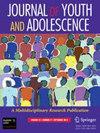Longitudinal Association Among Sleep Problems and Depressive Symptoms: Within-Person Mediated Effect of Thought Suppression.
IF 3.6
1区 心理学
Q1 PSYCHOLOGY, DEVELOPMENTAL
引用次数: 0
Abstract
While abundant evidence supports an association among sleep problems and depressive symptoms, the underlying mechanisms remain relatively limed. In particular, little is known about how thought suppression may contribute to the dynamic interplay between depressive symptoms and sleep problems during late childhood. This longitudinal study investigated the reciprocal relations among sleep problems and depressive symptoms, and the mediating effect of thought suppression, by using a random intercept cross-lagged panel modeling (RI-CLPM). A total of 554 students (Mage = 10.56 ± 0.84 years at T1; 41.7% girls) participated in a three-wave longitudinal study conducted at approximately six-month intervals. Results revealed that thought suppression mediated the relationship between depressive symptoms and subsequent sleep problems, with higher depressive symptoms impairing thought suppression, which then led to greater sleep problems. No significant gender differences were observed in these pathways. These findings highlight thought suppression as a potential mechanism linking depressive symptoms to subsequent sleep problems in children, offering new insights into the developmental co-occurrence of sleep and emotional difficulties.睡眠问题与抑郁症状之间的纵向关联:思想抑制的内在介导效应。
虽然大量的证据支持睡眠问题和抑郁症状之间的联系,但潜在的机制仍然相对有限。特别是,在儿童晚期,思想抑制如何促进抑郁症状和睡眠问题之间的动态相互作用,人们知之甚少。本研究采用随机截距交叉滞后面板模型(RI-CLPM),探讨睡眠问题与抑郁症状之间的相互关系,以及思维抑制的中介作用。共554名学生(T1时年龄= 10.56±0.84岁;41.7%的女孩)参加了一项三波纵向研究,每隔大约六个月进行一次。结果显示,思想抑制在抑郁症状和随后的睡眠问题之间起中介作用,抑郁症状加重会损害思想抑制,进而导致更严重的睡眠问题。在这些通路中没有观察到显著的性别差异。这些发现强调了思维抑制是将儿童抑郁症状与随后的睡眠问题联系起来的潜在机制,为睡眠和情绪困难的发育共同发生提供了新的见解。
本文章由计算机程序翻译,如有差异,请以英文原文为准。
求助全文
约1分钟内获得全文
求助全文
来源期刊

Journal of Youth and Adolescence
PSYCHOLOGY, DEVELOPMENTAL-
CiteScore
8.20
自引率
6.10%
发文量
155
期刊介绍:
Journal of Youth and Adolescence provides a single, high-level medium of communication for psychologists, psychiatrists, biologists, criminologists, educators, and researchers in many other allied disciplines who address the subject of youth and adolescence. The journal publishes quantitative analyses, theoretical papers, and comprehensive review articles. The journal especially welcomes empirically rigorous papers that take policy implications seriously. Research need not have been designed to address policy needs, but manuscripts must address implications for the manner society formally (e.g., through laws, policies or regulations) or informally (e.g., through parents, peers, and social institutions) responds to the period of youth and adolescence.
 求助内容:
求助内容: 应助结果提醒方式:
应助结果提醒方式:


